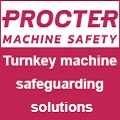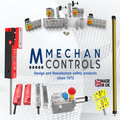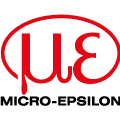
Posted to News on 25th Nov 2009, 12:50
Kopper Kooled brakes control position of drilling rigs
Wichita Kopper Kooled brakes are being used to secure the mooring of semi-submersible oil drilling platforms, their excellent heat dissipation capability meaning that they remain cool and provide fine adjustment while withstanding the huge variable forces on the cable drums.

Brakes produced by Wichita Clutch, part of the Altra Industrial Motion group, are being used on semi-submersible rigs for dynamic tensioning and the subsequent static holding of anchor cables that keep the rig in position during drilling. At times the cables need to reach lengths of several kilometres, meaning that the torsional load on the winch can become extremely high. The Wichita brakes are dual-action units, meaning that they are suitable for static holding and also for providing dynamic tension control during cable payout while the rigs are moored, and they utilise copper alloy heat transfer surfaces for optimised heat dissipation when the brakes are subjected to high loads during mooring.
Semi-submersible drilling platforms are used for exploratory drilling of potential new sites. The platforms are self-propelled and capable of drilling in depths of up to 2400m. Once the platforms are in position they can use dynamic positioning to remain stationary; however, if the platform is to remain in the same place for an extended amount of time then a mooring pattern will be laid. Due to the size of the platforms and depths in which they operate, it is essential that the mooring pattern is spread using a series of winches and brakes to control the cable payout.
A very broad spread, up to 6km wide, is necessary to ensure the platform's stability. To achieve this spread an anchor handling vessel is used. Such vessels transport the anchors, usually eight but sometimes as many as 16, away from the platform for laying. The payout tension has to be controlled as the anchor handling vessels move further and further away from the semi-submersible rig and cable weight increases. Each corner of the platform is typically equipped with two mooring winches, which, traditionally, need two secondary brakes; one for static holding once the anchors are laid, and another - a slipping brake - to control the cable payout.
Kopper Kooled brakes

In any braking application it is important to consider the brakes' heat dissipation capability; if the heat generated by the friction of the cable tensioning duty exceeds the convection capacity of the unit to dissipate it, the brake's operation may become compromised. During the payout of the mooring cables typical power levels of 1600kW of continuous heat energy can be produced due to the high-torque slipping of the brake. Providing a brake that is capable of high heat dissipation not only maintains reliability and extends operating life, but it also allows the use of a smaller brake - which saves cost.
The copper cooling used in the Wichita brakes is the most efficient method of heat dissipation in the Wichita range. Copper discs are used for high heat transfer from the friction surface to the continuous flow of cooling water. The use of a patented jacket design, coupled with the copper wear plates, provides precise stopping/tensioning capabilities with very high heat dissipation characteristics.
Wichita is able to customise each brake. Options include a saltwater corrosion protection package for applications such as those on drilling rigs. While the brakes are rated at up to 200,000Nm of torque this figure can be increased by up to 50 per cent if required. High-specification materials are used, including a reinforced neoprene fast-acting air tube that is designed to assure quick and smooth stops, and a new friction material that lasts longer with less wear on the mating copper. The spring-set, air release brakes are appropriate for fail-safe protection. High-strength ductile iron construction is used throughout, and thick friction linings provide for a long wear life.
Wichita Clutches provides a wide range of clutches and brakes. The Kopper Kooled range is suitable for many high-intensity applications. On semi-submersible platforms the company's products are also used on the storage winches that hold the mooring cable and on winches utilised by the anchor handling vessels. Other applications include oil/gas drilling, wind energy and tidal energy.
Follow the link for more information about Wichita Kopper Kool airtube disc clutches and brakes.
Want the latest machine building news straight to your inbox? Become a MachineBuilding member for free today >>

















